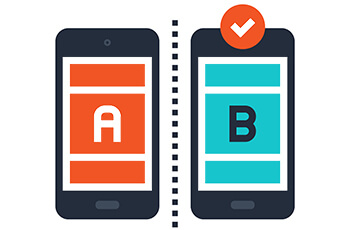When you think of sales emails, what comes to mind? For many, it’s the consistent influx of mail tied to e-commerce.
Some may argue these emails are much easier to implement; consumers know the company and the product (they’re on the email list from signing up for a discount, having an account, or giving the company permission in some other way). This audience “knows the drill” — these emails are tied to a sale or the announcement of a new brand or product. They either find value in receiving this information, or they don’t.
On the other hand, emails aimed at selling services often require a bit more finesse. Services often require more commitment, trust, time and often money from the consumer and tend to have a longer sales cycle. That’s why taking the time to craft a solid set of emails for your campaign is worth your while. These “drip campaigns” help build rapport with the customer if done correctly.
This article features a few of my favorite ways of structuring and writing effective sales email campaigns. For an in-depth look at creating sales and marketing emails, see MailChimp’s field guide.
Define your parameters
Depending on how much time you have, you may choose to create a pre-defined number of automated emails and “set and forget” it. This works well if you’re busy and can only devote time to creating your campaign once.
If you have more time or staff support, you may choose to create an ongoing stream of emails every other week or so for longer periods of time. This strategy has the advantage of keeping existing customers engaged in your services, provided they stay on your email list. In my opinion, there isn’t necessarily a right or wrong — choosing what works for you and actually implementing it will pay off more than not doing it at all.
Automated
If you’ve decided on a preset email campaign, you will want to focus on clarity to maximize the impact of each one. This is a very straight and narrow strategy.
One method to try in this case is building an email campaign that escalates; i.e. start out introducing yourself, your company and what you do, then flow into what you offer and how the customer could benefit, then how they can get going. The key is to clearly tie into each email how your service or product directly helps or solves a need of the customer.
Consistent Stream
If you want to take a more consistent approach to contact for a longer period of time, I suggest brainstorming a large list of ideas you can relate to your business. For instance, if you’re a therapist, there’s a million topics you could probably tie into your business. It’s an area that’s constantly being researched and developed, and you’re probably furthering your own knowledge and stills each year. In this case, a more consistent set of emails could make a lot of sense, provided you have the time.
Pick a subject that relates to your practice (i.e. parenting styles), do some research on some relevant studies, and tie an interesting data point into some helpful tips or resources for the reader (more on that in point #2). This is a very effective structure I default to all the time.
Basic consistent-stream email structure:
- Brainstorm a list of topic ideas that directly relate in some way to your business, and organize them into an accessible database like Google Sheets, Evernote, or Asana.
- Match a data point, study, theory, etc. to each one.
- Craft your email around #1 and #2, keeping it short and conversational and adding in some tips or useful info that the reader can “take away.”
Provide Value
To keep someone subscribed, your emails need to provide some sort of value to the consumer, much like a discount code would in an e-commerce email.
A technique I find effective is structuring your email around a snippet of data or research that pertains to your unique market. For instance, if you’re a therapist, there’s always new and interesting research coming out in publications like Psychology Today. Pick a relevant data point or statistic that ties in with your services and the ultimate goal, and structure your email around it. Use it as the point that drives home your ultimate goal of people realizing the value of your service.
After picking the data point, I like to provide the reader of the email with a few tips they can “take away” and use right away. For instance, if you specialize in psychology and parenting, you may pick a data point about the effectiveness of setting limits or boundaries with your child, then go into a few simple tips on how to do so.
Stay Human
Remember: you are speaking to real people with real needs, there’s no reason to hard sell. Put yourself in the other set of shoes and see what it is they would like to hear and how they’d like to be approached. If you’re questioning your email, it never hurts to get feedback from colleagues.
A/B Test Subject Lines
Email management programs like MailChimp allow you to A/B test many different things in emails, but I find testing subject lines to be very effective. I typically set the test group to 10 percent of the email list, with the winning subject line (the most opens) sent after four hours.
I encourage you to go with your gut when you’re first starting out and text subject lines you think will immediately grab people’s attention. I recommend staying away from being too “salesy” and that you speak to people as colleagues.
If you’re tapped for ideas, try using your statistic as part of the subject line, i.e. “Cognitive therapy may reduce stress by 30%.” In your email, you’d then go into a key data point like an interesting study (keep the conversation light), and then how you have x years of experience with cognitive therapy and have great results in your practice.
Another technique I like is identifying a need in the subject line, which again ties into the body of the email and its data — for example: “Are you experiencing too much negativity at work?” Then tie in a few tips and a statistic on the subject.
Trial and Error
As with any marketing or sales efforts you’ll learn as you go, which is extremely valuable. Don’t get down on yourself if your first try doesn’t have the results you’re after. Give it some time and evaluate the emails that got a decent response, then adjust down the road.


